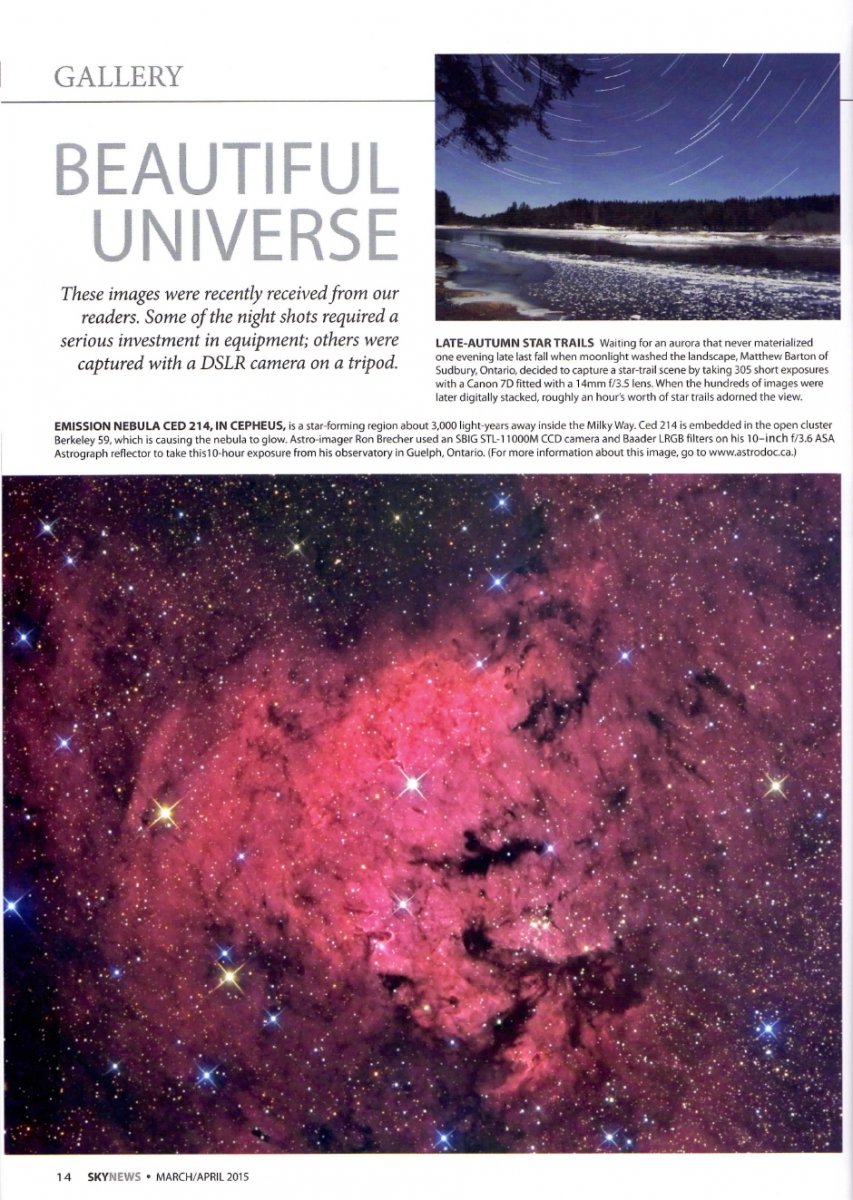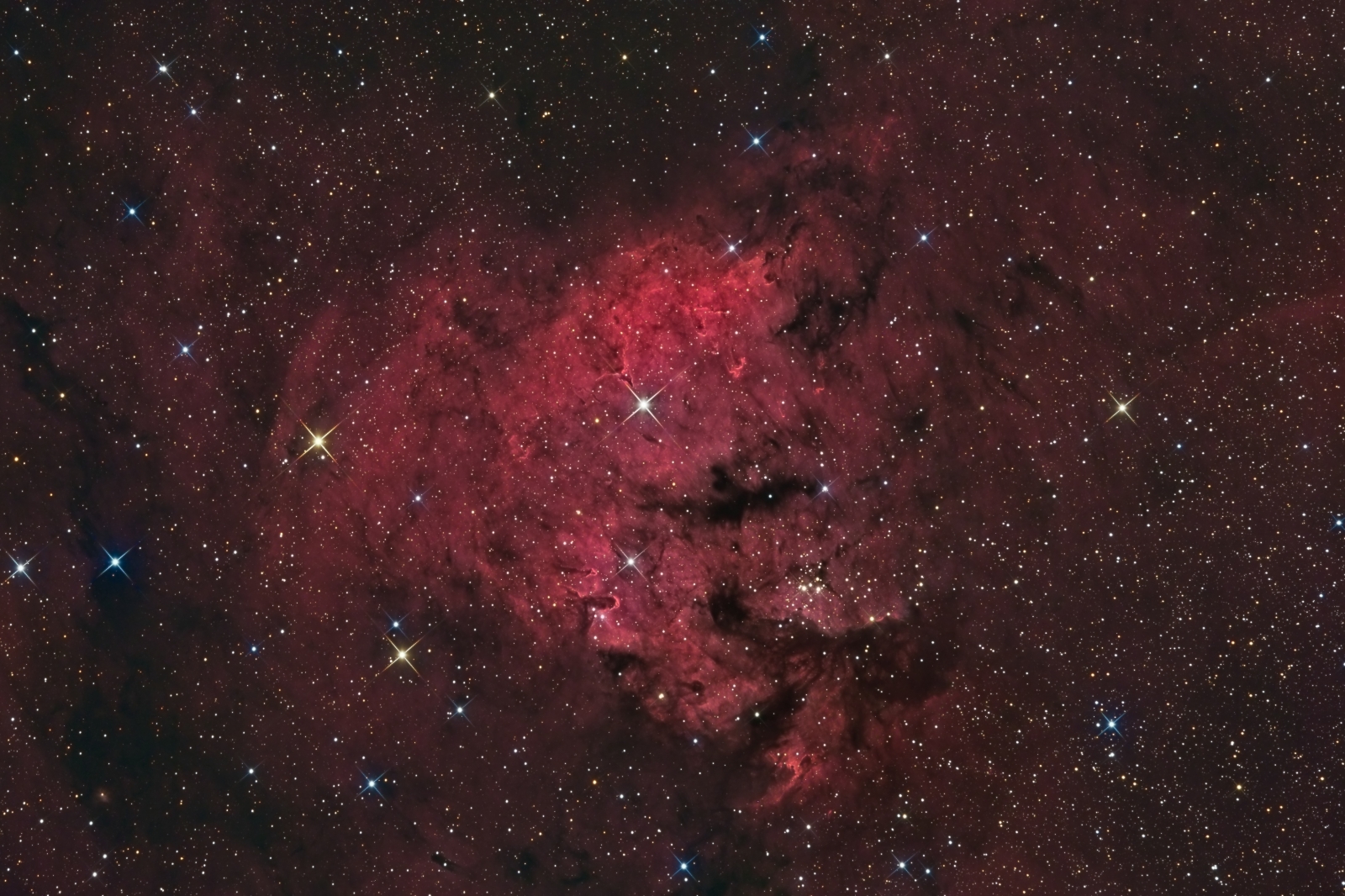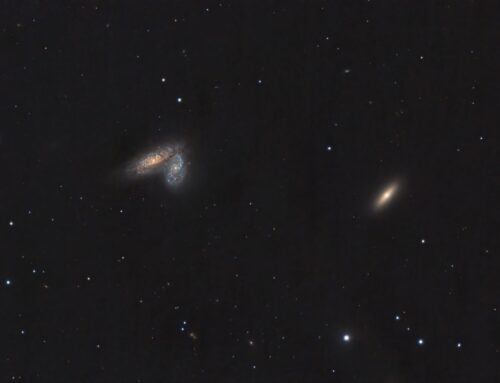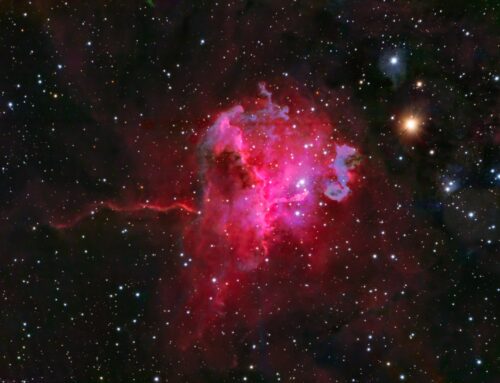Ced214 Emission Nebula
Click image for full size version
December 15, 2014, published in SkyNews Magazine, March-April 2015, p. 14
 Ced stands for “Cederblad” and refers to a catalogue published by this person in 1946. All its members are emission nebula located inside the Milky Way. Ced214 is also catalogued as Sh2-171, in the Sharpless Catalogue. Ced214 is around 2740 light years away in the constellation Cepheus. Embedded in it is the open cluster Berkeley 59, which is causing the nebula to glow. The nebula is an active star forming region, forming stars of relatively small mass.
Ced stands for “Cederblad” and refers to a catalogue published by this person in 1946. All its members are emission nebula located inside the Milky Way. Ced214 is also catalogued as Sh2-171, in the Sharpless Catalogue. Ced214 is around 2740 light years away in the constellation Cepheus. Embedded in it is the open cluster Berkeley 59, which is causing the nebula to glow. The nebula is an active star forming region, forming stars of relatively small mass.
The data for this image were acquired in September 2012, but it was processed in December 2014.
Tekkies:
SBIG STL-11000M camera, Baader LRGB filters, 10″ f/3.6 ASA astrograph, MI-250 mount. Guided with STL-11000’s internal guider. Focusing with FocusMax. Acquisition, guiding, calibration, registration and integration all done using Maxim-DL. All other processing in PixInsight. Shot from my SkyShed in Guelph, Ontario. No moon. Below average transparency and average seeing.
8x10m of R, G and B and 18x20m Ha (total 10 hr).
HaRGB:
Ha, R, G and B masters were cropped to remove edge artifacts from stacking. The R, G and B channels were combined to make an RGB image. Ha and RGB were processed with DBE, combined with the NB-RGB script, and Colour Calibration was applied. HistogramTransformation was applied, followed by TGVDenoise and another HistogramTransformation to reset the black point.
Synthetic Luminance:
Creation and cleanup: The R,G,B and Ha masters were combined using the ImageIntegration tool (average, additive with scaling, noise evaluation, iterative K-sigma / biweight midvariance, no pixel rejection). DBE was applied to neutralize the background.
Deconvolution: A star mask was made to use as a local deringing support. A copy of the image was stretched to use as a range mask. Deconvolution was applied (40 iterations, regularized Richardson-Lucy, external PSF made using DynamicPSF tool with about 30 stars).
Stretching: HistogramTransformation was applied, followed by TGV Denoise and another HistogramTransformation to reset the black point. No pixels were clipped during either stretch. The Curves tool was used to boost brightness, contrast and saturation of the nebula.
Combining SynthL with HaRGB:
The luminance channel was extracted, processed and then added back into the HaRGB image as follows:
1. Extract luminance from the HaRGB image.
2. Apply LinearFit using the SynthL channel as a reference.
3. Use ChannelCombination in the Lab mode to replace the luminance of the HaRGB with the fitted luminance from step 2.
4. LRGBCombine was then used to make a SynthLHaRGB image.
Final Processing
The DarkStructureEnhance script was applied (scale 8, 1 iteration, 0.4 strength). LinearMultiscaleTransform was used to sharpen the first 3 wavelet layers in the brighter areas of the nebula. Colour saturation and curves were adjusted slightly.
Image scale is about 2.2 arcsec per pixel for this camera / telescope combination.







Leave A Comment